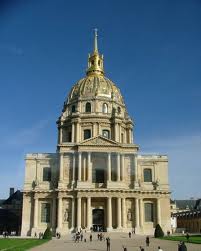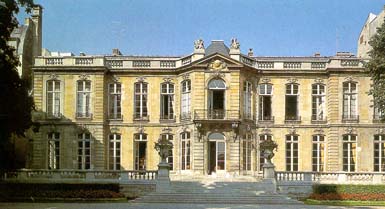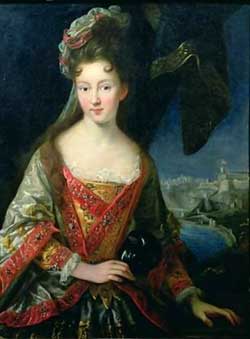
Since becoming a favorite amongst the upper echelons of French society in the 17th century, Invalides has been an area of Paris filled with myth and legend. The kind of myth and legend that only nobility, royality and the incredibly rich, French or otherwise, can bring to an area.
Predictably, much of the intrigue and scandal is tied up with the neighborhoods most exlusive and extravagant properties which have been passed from owner to owner since their creation.
In 1649, as part of his plan for the construction of the Hôtel des Invalides, Louis XIV decided to improve the transport links between Saint-Germain-des-Prés and the marshy terrain chosen as the new building site. It being the 17th century the residents of Paris did not get a shiny new high speed railway but a road - the Rue de Varenne.
Henceforth the "Noble Faubourg" gained a new lease on life, the proximity of Versailles being irresistible for an aristocracy who lived exclusively by and for the Court.
Rue de Varenne quickly became the most exclusive address in Paris and wealthy noble families flocked there to buy land on which to build wildly extravagant houses. Naturally drama and scandal soon followed them.
One of the resisdences with the most interesting tales to tell is Hôtel Matignon, the current home of the French Prime Minister.

Ever heard of the phrase "If only these walls could talk, what tales they would tell"? Well the tales told by the walls of Hôtel Matignon would span generations, different royal houses and make most modern public scandals feel like playground squabbles.
It all started in 1722 when Christian Louis de Montmorency-Luxembourg, Prince of Tigny and Marshal of France purchased land along the Rue de Varenne. He felt he needed land and a house big enough to match his enormously long name so he bought 30,000 m² and built upon it.
The Prince of Tigny, as we shall call him, comissioned architect Jean Courtonne to design the building but the expense of the enterprise proved too much for the Prince and he was forced to sell Courtonne's masterpiece in 1725 to the Count of Matignon. It is of course from this family that the Hôtel gets its name.
The son of the Count, Jacques de Matignon, struck gold when he was presented as the preferred suitor for the daughter of Antonio I of Monaco. Jacques was attracted by the prospect of his very own principality and so the marriage went ahead.
Louise Hippolyte of Monaco became the head of the state after her father's death but upon her demise in 1731, Jacques de Matignon became Jacques I of Monaco. Evidently he did not do a very good job as he fled the principality in 1732, preferring to return to the comforting arms of his mistresses in Versailles. His son Honoré took over and did a much better job, until 1793.

Talk of a Revolution was brewing, and despite Honoré being in favor, he was imprisonned on 20th September. When he was liberated a year later, he was ruined and his sons were obliged to put the Hôtel up for sale in 1802.
Now the story starts to heat up.
The next owner of the Hôtel Matignon was Anne Éléonore Franchi, a professional dancer who had recently been expelled from Austria by the Empress in return for becoming the mistress of her husband, Joseph II. Franchi had previously caught the eye of the Duke of Württemberg and had 3 children by him - he himself had a string of mistresses and over 11 illegitimate children. When the Duke died in 1793 she threw herself into the arms of Joseph II.
Now in 1802 she returned to France with her newest rich lover, banker Quentin Crawford. They refurbished the Hôtel together and it became a social hub of Paris once more.
Someone who knew how to put his money to good use, a man called Raffaele, financed many of the Paris' construction projects of the second half of the 19th century. The railroads in Austria, Latin America, Portugal and France (the Paris-Lyon-Marseille line), the digging of the Fréjus tunnel and the Suez Canal and the Paris buildings designed by Baron Haussmann all came out of his pocket.
Soon after fall of Napoleon III, the Duchess suggested that the Count of Paris (the pretender to the French throne) move into the mansion on Rue de Varenne. He came to occupy the ground floor of the Hôtel Matignon. On May 14, 1886, he threw one of the century's most sumptuous receptions to celebrate the marriage of his daughter Princess Amélie to the heir to the Portuguese throne.
Three thousand guests, the entire aristocracy of France, the diplomatic corps and numerous political figures thronged to the Hôtel de Matignon to see and be seen.
Soon the Duchess of Galliera became disillusioned and quit Paris, turning her mansion over to the Austro-Hungarian Emperor. It became his embassy in France. At the outbreak of the First World War this became a bit awkward as the two countries found themselves on opposite sides so the Hôtel Matignon was declared "enemy property" and confiscated in 1919.
Some squabbling ensued and France assumed ownership. Next comes some confusion but ultimately it was decided that the Hôtel should become the residence of the prime ministers of France. Pierre Étienne Flandin became the first politican resident in 1935 and it has passed down to new prime ministers ever since.